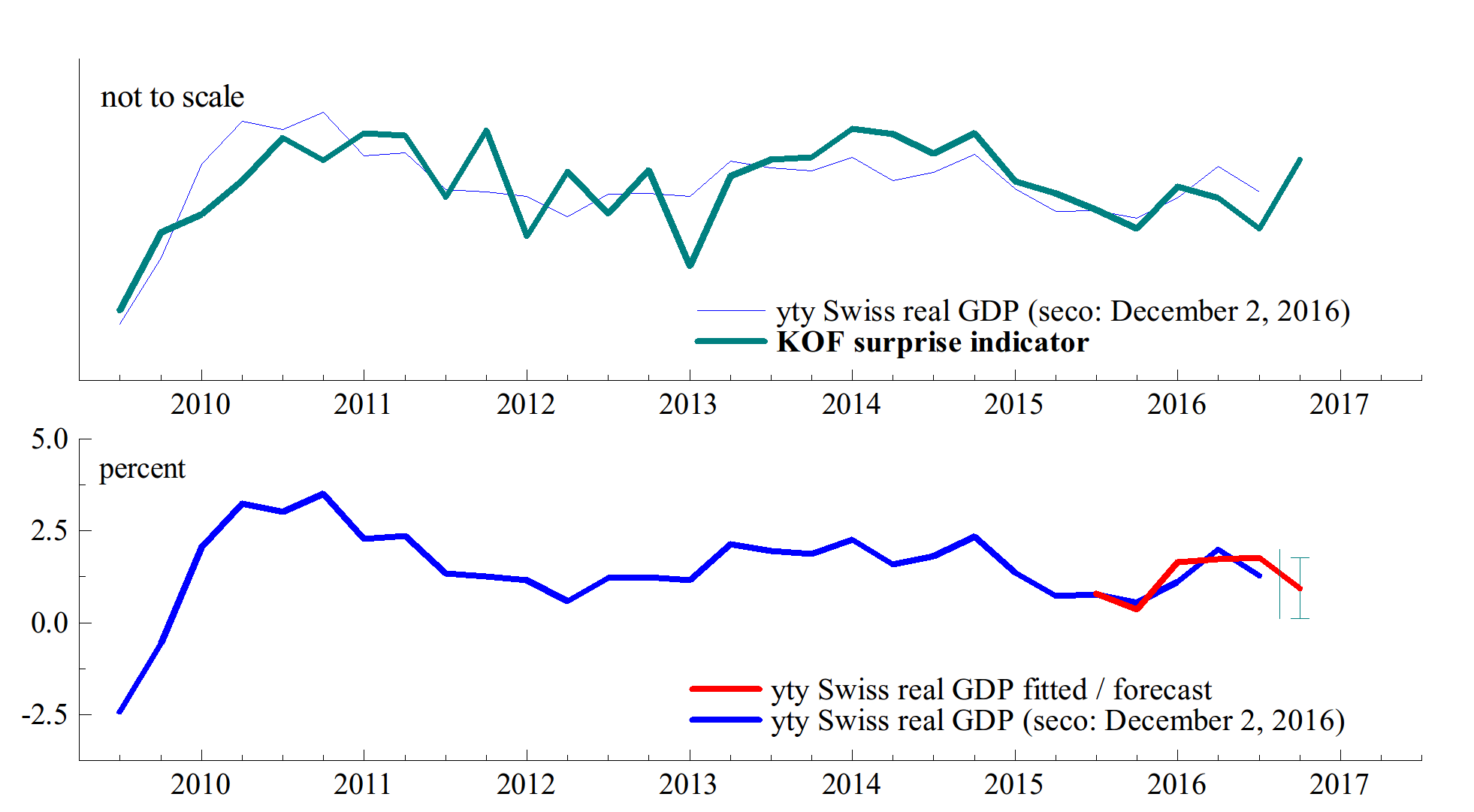GDP forecast based on semantic business cycle identification - release: 2017-02-15
Date |
Year-to-year growth (%) of Swiss real gross domestic product (GDP) |
||||
|---|---|---|---|---|---|
fitted / forecast |
standard error |
seco estimates* |
|||
2016(2) |
1.72 |
- |
1.99 |
1.99 |
|
| 2016(3) | - |
- |
1.27 |
||
| 2016(4) | 0.42 |
- |
- |
||
Sources: Own calculations, forecast for 2016(4), fitted values otherwise, *seco releases (left: December 2, 2016, right: September 5, 2016).
Sample: 2000 (2) - 2016 (3), Forecast: 2016 (4)
Note: Forecasts obtained by best nowcasting model.
Forecast update. Following two consecutive declines, the latest reading of the «KOF surprise indicator» for measuring Swiss economic dynamics jumps to -0.026 (up from -0.044). In spite of the this rather positive news the new level indicates a further slowdown of year-on-year growth of the Swiss economy.
The quarterly autoregressive model for estimating the year-on-year growth rates of Swiss real GDP also builds on past GDP values. Therefore, the estimation output and forecasts are affected by data revisions. The «KOF surprise indicator» provides a reliable anchor as it is not subject to revisions. Last year's first quarter model forecast, for example, amounted to 1.19 percent y-o-y growth compared to SECO's first guess of 0.7. Consecutive SECO revisions put the same value to 1.14 and1.11, its latest estimate which is pretty close to the model's earliest output and underlines the importance of robust regressors as well as keeping a close watch on the scope for GDP data revisions.
Based on the «KOF surprise indicator» the Swiss economy's year-on-year rate of real expansion amounts to 0.94 percent in 2016, fourth quarter.
| NOTES | |
| Previous update | |
| Standard error of regression* | 0.65 |
| Literature | |
| Business cycle data | download |
| History | |
| Complete release history | |
| First release | |
| Next release | 2017-05-17 |
